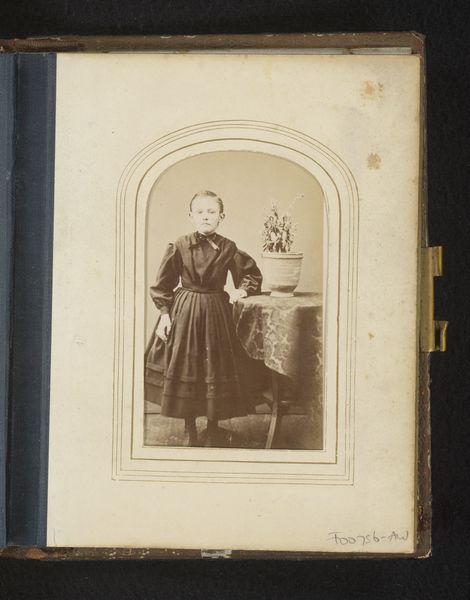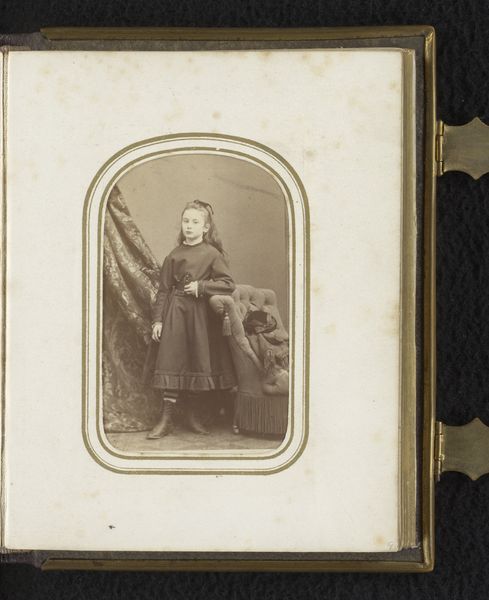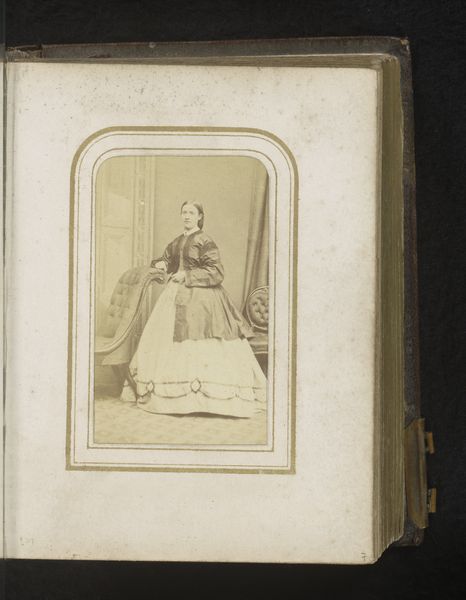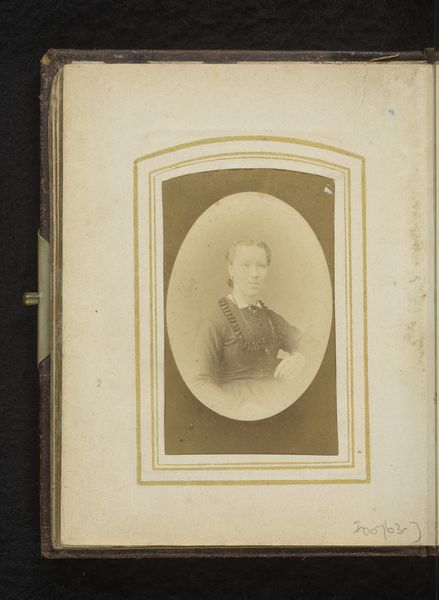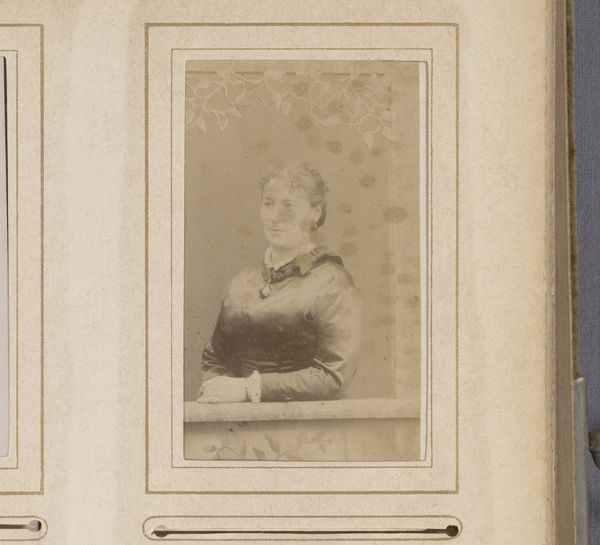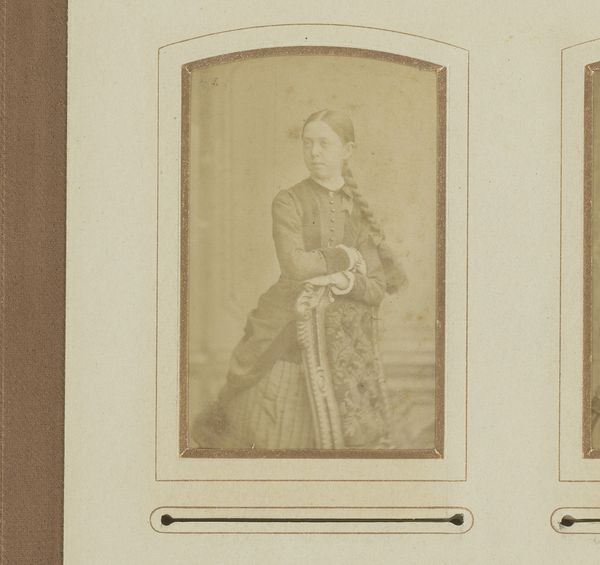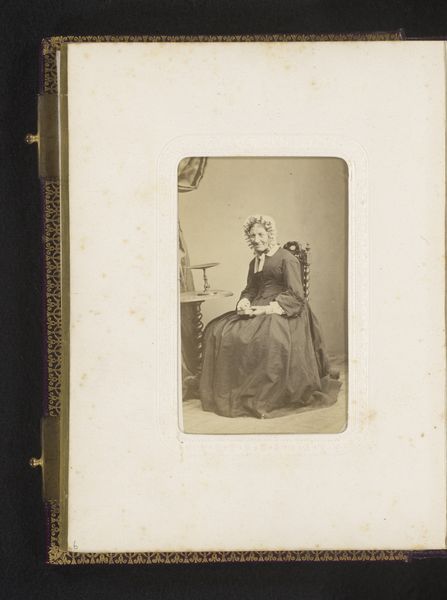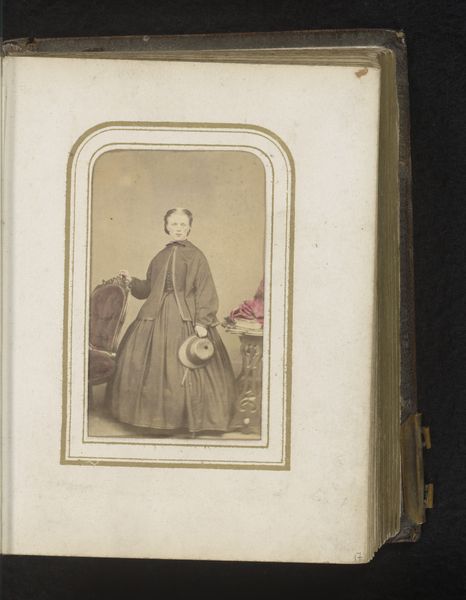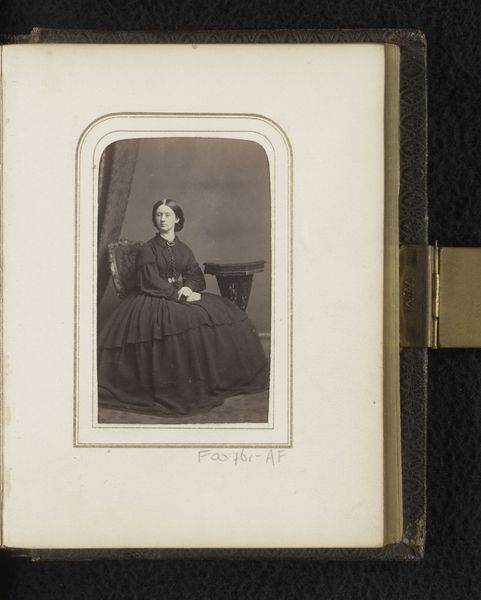
photography, gelatin-silver-print
#
portrait
#
photography
#
gelatin-silver-print
#
realism
Dimensions: height 102 mm, width 63 mm
Copyright: Rijks Museum: Open Domain
Curator: Looking at this portrait, the first thing that strikes me is how staged it feels. Editor: Yes, "Portret van een staande vrouw," or "Portrait of a Standing Woman," is a photograph, specifically a gelatin silver print dating from 1870 to 1900. The studio setting and posed subject underscore how constructed these images were. Curator: Right. You can almost smell the darkroom chemicals. The tonal range seems limited—a real product of its time. How did this printing method shape photography's social role, in your view? Editor: Incredibly important. The rise of gelatin silver prints expanded photography's accessibility, especially for portraits. Middle-class families could now commission affordable likenesses, reshaping representation beyond the elite. Curator: And consider the labor: from the photographer managing the entire process to potentially assistants handling various stages. Where would you position a work like this within those dynamics of production? Editor: Precisely. The anonymous nature of this artist emphasizes photography's shift from high art to craft, and its crucial function in disseminating ideals around gender and class. I read the sitter’s demure pose through the lens of the expectations placed on women of that era. Curator: Absolutely. Even her garment, probably mass produced, has significance when considering how style was becoming available to a wider spectrum of society. This photograph is a fascinating capsule of those changes. Editor: It’s a valuable reminder of the layers of intention, both technical and societal, that shaped even seemingly straightforward depictions of the era. Curator: For me, focusing on those historical details brings it all to life—revealing the production methods as well as the sitter’s societal role. Editor: Yes, seeing art this way underscores how objects embed historical processes and social dynamics.
Comments
No comments
Be the first to comment and join the conversation on the ultimate creative platform.
